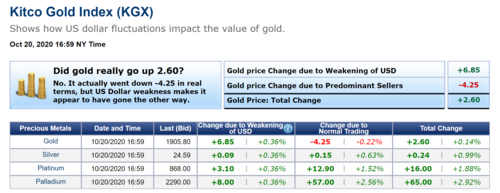
Hurdles remain for a fiscal stimulus bill to pass
Featuring views and opinions written by market professionals, not staff journalists.
Commentaries & ViewsShare this article:
Although the House, Senate and White House are working feverishly to come to an agreement and pass fiscal stimulus bill before the election, it seems that the differences are split three ways.

Yesterday House Speaker Nancy Pelosi and the U.S. Treasury Secretary Stephen Mnuchin spent 53 minutes on a telephone conversation attempting to narrow the differences and agree on a compromise. Speaker Pelosi said that she “hopes that by the end of Tuesday there will be clarity on whether a coronavirus stimulus bill can be passed before the November 3 elections.”
However today in an interview with CNBC news Mark Meadows, White House Chief of Staff said that, “We are still billions of dollars away from a fiscal stimulus bill that can be passed before the election.”
The difference between the White House, Senate and Congress is the dollar amount that will be allocated for a stimulus bill and where that money will go to. The White House proposed a stimulus bill of $1.8 trillion to help Americans and small businesses who have been greatly affected by the pandemic. While the House of Representatives have proposed a bill that will require $2.2 trillion. The third proposal is by the U.S. Senate which is been labeled the “skinny bill” will require $500 billion and fund additional stimulus checks to American taxpayers and more funding for the paycheck protection program.
Senate Democratic leader Chuck Schumer said that the Republican plan abandons state and local governments in need and has inadequate funding for unemployment benefits.

One key difference between the House of Representatives and the Senate is whether or not there should be federal funding to states which are in great need of a capital infusion. However, the Republicans view this as a “blue state bailout”.
Yesterday Nancy Pelosi said there is only a 48-hour window left to pass a fiscal stimulus bill which means that there is now only 24 hours left.
Many analysts including myself believe that a new round of fiscal stimulus will be extremely bullish for the price of gold and concurrently bearish for the U.S. dollar as the budget deficit in the United States for fiscal year 2021 begins to balloon.
As of 4:24 PM EST gold futures basis the most active December 2020 Comex contract is trading down by $2.30 and currently fixed at $1909.40.
The current price of spot gold is $1905.80 with a net gain of $2.60 on the day according to the KGX (Kitco Gold Index). On closer inspection we can see that dollar weakness today accounted for a net gain of $6.85. Market participants however bid the precious metal lower by $4.25.
Wishing you as always, good trading,
By Gary Wagner
David